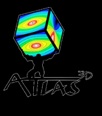MATLAS


MATLAS (Mass Assembly of early-Type GaLAxies with their fine Structures) investigates the mass assembly of Early-Type Galaxies (ETGs) and the build-up of their scaling relations, with extremely deep optical images. The stellar populations in the outermost regions of ETGs, the fine structures (tidal tails, stellar stream, and shells) around them, and the Globular Cluster (GCs) populations, preserve a record of past merger events and more generally of the evolution and transformation of galaxies.
The project capitalizes on several timely developments 1) The unique capabilities of MegaCam. Dedicated imaging procedures and a new pipeline, developed as part of the NGVS survey, now allow the detection of surface brightness structures, as faint as 29 mag/arcsec2 in the g band. We apply a technique of galaxy archeology, that was first tested on local spirals, to lenticulars/ellipticals which are expected to exhibit many more relics of their mass assembly. 2) An already available stunning ancillary dataset provided by the ATLAS3D project giving complementary information on their dynamics, gas and stellar content. 3) State of the art numerical simulations developed by our team. The simulations predict various types of fine-structures and stellar halos depending on the mechanism driving the mass assembly: major or minor, wet or dry mergers; secular evolution.
The database collected as part of this Large Programme and earlier observations, consisting of multi-color images for a volume limited sample of 260 nearby ETGs - the ATLAS3D sample - will have a high legacy value. It allows detailed studies of individual well-known objects, rejuvenated with the unprecedented deep images, and to address broader science topics, such as the origin of the galaxy scaling relations, that require complete samples.
The team consists mainly of members of the Atlas3D and NGVS collaboration. The PI is Pierre-Alain Duc.


